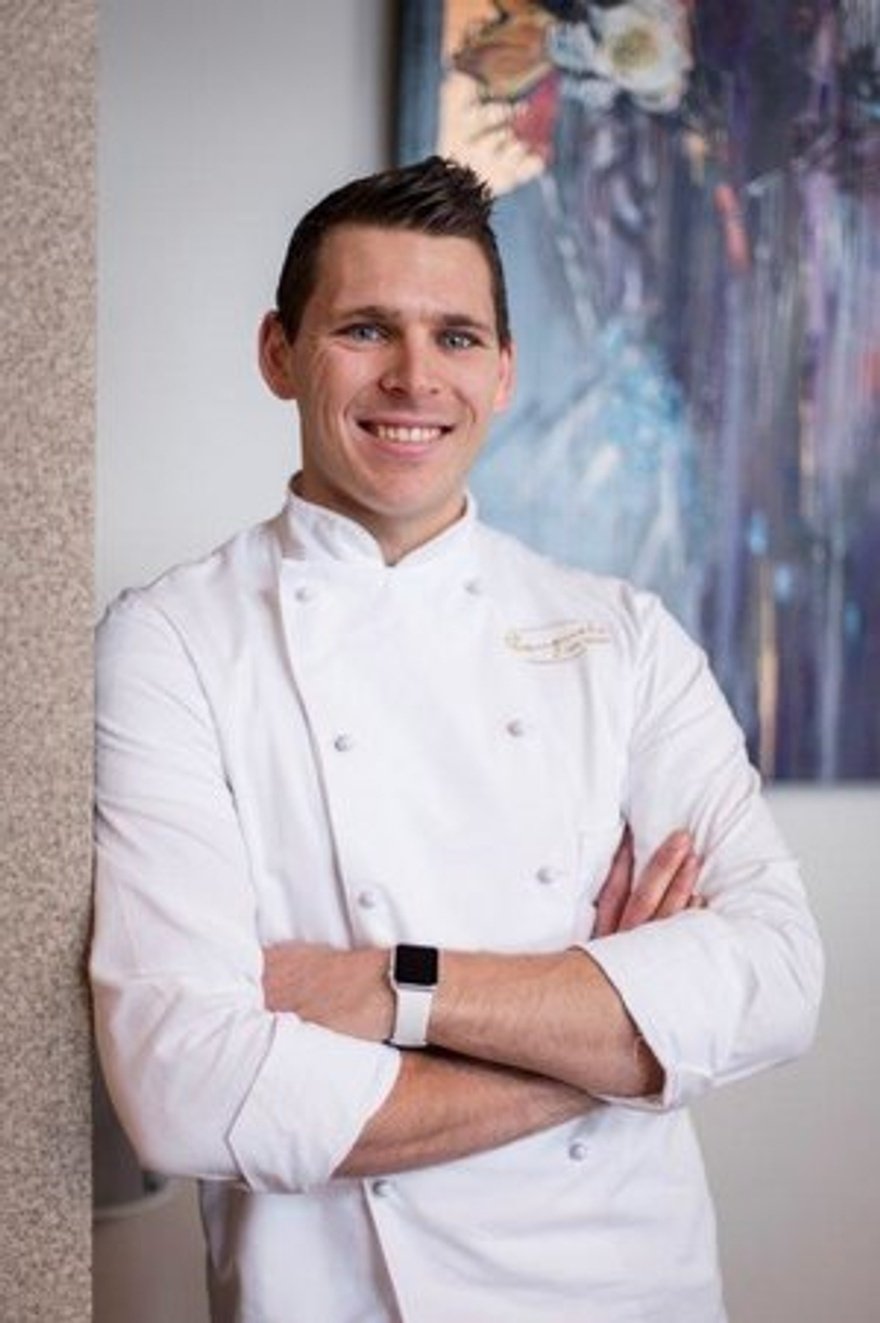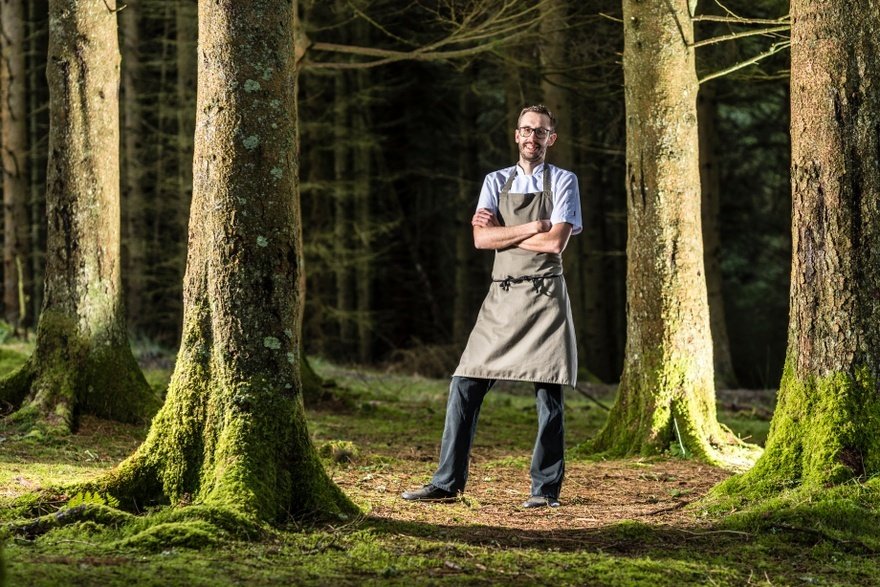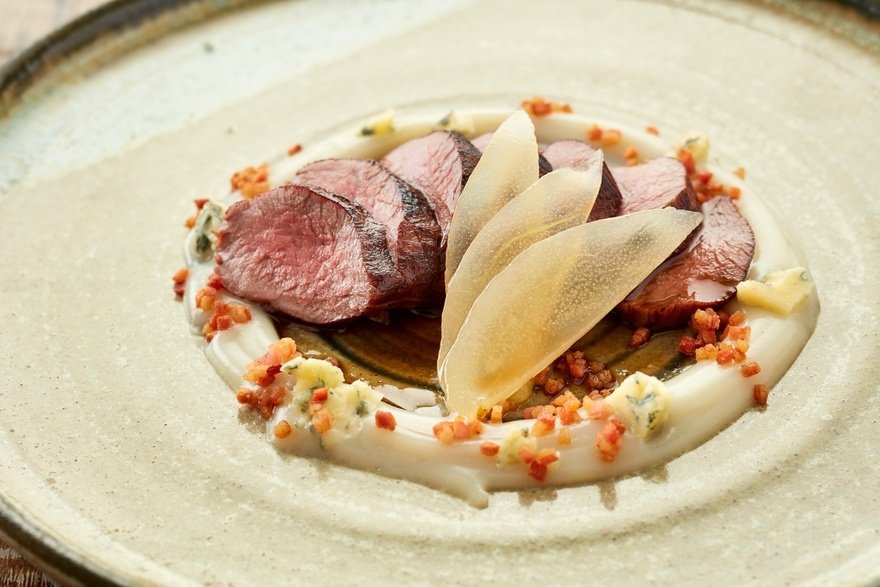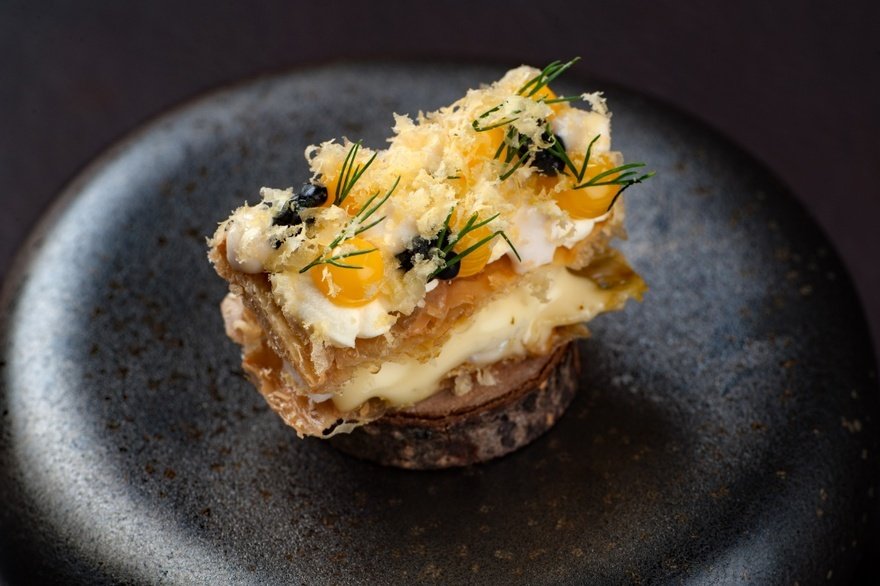Meet five new Michelin star holders (you may not have come across)
As Michelin handed out the biggest haul of stars ever seen in the Great Britain and Ireland guide, it was the regions and Ireland that hogged the spotlight.
While the awarding of three stars to Mayfair's Sketch may have led most Michelin coverage on Monday evening, the guide also showcased the huge amount of talent outside of the capital, including areas that could have been forgiven for feeling overlooked for many years.
The Caterer has spoken to five of the lesser-known chefs who were presented with a Michelin star to find out how they plotted their route to the pinnacle of their profession.
Interlude, Leonardslee Lakes and Gardens
Jean Delport came to the UK from his native South Africa last year to head up restaurant Interlude at Leonardslee Lakes and Gardens in Horsham, West Sussex. The 240-acre estate was bought by Penny Streeter in 2017 before being restored and relaunched as a horticultural gem alongside a restaurant serving produce sourced from the estate and nearby farms.
Delport worked with Streeter at her restaurant in Somerset West, Cape Town, South Africa before being enticed to put his own stamp on restaurant Interlude.
"We opened a restaurant in Somerset West and quickly developed a style I wanted to cook," Delport explains. "Penny then found Leonardslee, which was the perfect setting for what we were doing. So we moved across and she gave us free rein to create the menus.
"It's every chef's dream. The whole idea is that the restaurant is focused around the gardens, so in every course there's an element that we've either foraged or farmed."
Depending on the season, the menu includes the likes of estate rabbit, winter purslane, hogweed cider and charcoal; fallow deer with local braai and sour raspberry; and oyster, foraged greens and juniper.
"We have our own bees, a few pigs and chickens," Delport adds. "And the gardens are rich in produce. There are plants from all around the world that were planted in the 1900s."
He says that moving from South Africa meant a steep learning curve with the different produce, but that he had the advantage of approaching it with an open mind.
"We've adapted it around our South African style, which has given us a unique twist," Delport adds. "Our bread course is really interesting. At the moment we're doing a chervil butter with a chicken liver parfait in the middle.
"We're also using Trenchmore beef, which we age for 150 days and we use the fat for butter, which has beef extract – like Marmite – in the middle. It's served with an enriched fennel dough that's similar to a brioche, but more South African in style, as it's traditionally made from the ferment from a wine barrel. It's an idea from South Africa we've taken and made more accessible."
The Cottage in the Wood, Braithwaite
Ben Wilkinson has been head chef of the Cottage in the Wood in the Lake District for 18 months, working with a small team to showcase amazing produce.
Wilkinson joined the restaurant a year before, taking on the role to help a friend, initially intending to stay for just a fortnight. He had started cooking out of school, taking up a commis position at a local golf club in Derbyshire, before heading to Galvin at Windows in the Hilton Park Lane, London and later to Midsummer House in Cambridge and the Rampsbeck hotel in the Lake District, among others.
The Cottage in the Woods, owned by Kath and Liam Berney, sits atop a valley in Braithwaite with stunning views. The restaurant has 30 to 35 covers and serves an à la carte menu alongside an eight-course ‘Taste Cumbria' offering.
Wilkinson says: "I've got one experienced chef and two really young chefs – one of who has just finished college and the other a 16-year-old apprentice – so I thought, let's do really nice, simple food. We don't need to go over the top, we'll just use amazing produce and cook it really well. I'll teach them how to cook it and then we'll build on that and that's what we've done. "Every time we change something, we make it a bit better. We're using the best produce and just cooking it really nicely. It's classic techniques and classic ideas, but using modern methods to make it more efficient, fresher and lighter."
Wilkinson showcases local produce, including Herdwick hogget, venison, Cumbrian cheeses, butter and organic locally milled flour; although on the odd occasions the area cannot offer up the best he's not afraid to go further afield. His ‘Taste Cumbria' menu includes dishes such as seared venison, sour fennel and cabbage, capers, pine nuts and smoked emulsion; Herdwick hogget loin, braised lentils, sweetbreads and spiced carrot as well as douglas fir, blackberry and yogurt crumble.
The Michelin guide states: "Top quality ingredients and classic techniques take the lead and there is a certain sophistication to the flavour pairings – and while skilfully making the dishes look eye-catching, he manages to avoid over-elaboration."
The chef explains: "We start with the produce, a product I want to use or something that I'm introduced to – one stand-out product. I look at the classic flavour combinations straight away; I'm not trying to invent anything, I'm not trying to be this guy who's coming up with something wacky that no one's ever heard of.
"I always say my food is really easy to judge because you've had it before and you know you like it. The challenge for me is I've got to make it the best you've ever had."
The Old Stamp House, Ambleside
Ryan Blackburn opened the Old Stamp House in Ambleside with his brother Craig in February 2014, serving up traditional Cumbrian food with a modern twist.
The siblings are the third generation of their family to run hospitality businesses in the Lake District, with Ryan leading the kitchen and Craig front of house.
The chef began his career at his family's pub, going on to the Angel at Hetton in the Yorkshire Dales and Restaurant Martin Wishart in Edinburgh. He returned to the Lake District to take the position of head chef at the Cottage in the Wood before teaming up with his brother to open the 28-cover Old Stamp House.
The restaurant sits in the cellar of a historic building, which was previously the workplace of then stamp-distributor for Westmorland, William Wordsworth. A Greggs bakery occupies the floor above.
Presenting Ryan with a Michelin star on Monday, the 2020 guide said: "Skilfully prepared, carefully balanced dishes have been well thought through and are packed with flavour. The Cumbrian larder is the star of the show, with local rabbit, deer and beef popular choices."
For the chef, Cumbria is deeply rooted in his cuisine and the atmosphere of the restaurant. He explains: "I grew up in a tiny village – there were only 27 pupils at my primary school – and a lot of the people in the village were hill farmers, so we get the meat directly off them and directly off the game merchant. We are very Cumbrian; we try to do a modern take on a traditional Cumbrian menu. That has always been the aim – that's my passion.
"We're not molecular, we're not super-modern. My training is very classical, but we just try to be contemporary and work with what's best and look at it a bit differently. I haven't eaten out much this year and I stopped reading cookbooks to focus on myself."
The small restaurant – Ryan is joined by just sous chef Dan Hopkins and chef de partie William Bolsover in the kitchen – offers tasting and à la carte menus, with dishes on the latter including seared Furness wood pigeon, beetroot, pickled redcurrant and black pudding sauce; Yew Tree Farm Herdwick hogget, girolles, Roscoff onion and artichoke, as well as Cumbrian gingerbread cheesecake, brambles, and blackberry sorbet.
Ryan says the restaurant is fully booked every day it is open, attracting locals as well as the international visitors that flock to the national park – he's even had to turn away Baywatch star David Hasselhoff. He's eager not to make any knee-jerk changes after receiving the accolade, instead continuing to strive for a constant, natural evolution led by his customers.
He adds: "We just do what we do and there's an honesty to my food. It's very seasonal and I think the portions are generous – it's very important that customers leave satisfied. We have to bear in mind we're in the middle of Lake District National Park and that people have often been out walking. It's important that guests get what they're looking for."
Beach House, Oxwich Bay
Hwyel Griffiths opened the Beach House in Oxwich Bay in June 2016, attracted by the opportunity to carve out a niche in his home country of Wales.
Owned by Neil and Zoe Kedward, the 50-cover restaurant is sister to both Coast in Saundersfoot and luxury hotel the Grove at Narberth, with the common traits of quality Welsh hospitality in areas of outstanding natural beauty shared among them.
The shoreline location of Beach House on the edge of the Gower Peninsula near Swansea brings with it access to what Griffiths considers incredible produce.
"The local ingredients are the absolute driving force for me. There are two boats out in the bay that fish for lobsters and bass for us. We get our lamb from North Gower and our pork and beef come from just on the other side of the M4," he says. "But I don't use it just because it's there. I use it because it's some of the best I've tasted."
While his dishes are rooted in Welsh ingredients and style – the concise menu and website are all entirely bilingual, which has proved exceptionally popular with Griffiths' fellow Welsh speakers – he is keen to ensure there is diversity. For example, slow-cooked belly pork with black pudding, creamed potato and pork pie sauce also features pineapple on the plate, while crispy pork shoulder is tandoori-roasted with yogurt, onion and coriander.
"To have such a diverse mix of ingredients is fantastic because the menu is quite small," he explains. "I use things like kimchi and ponzu with a light touch through the menu to add interest and flavours that we don't typically have in Britain.
"It's rooted in classic cookery because that's what works. But the flavour combinations are what modernises it. We don't use a lot of water baths and rotary evaporators – we want to keep it real."
The success of Beach House since its launch three and a half years ago led to Griffiths' promotion to chef partner at the start of the year, as well as a number of awards including Swansea Bay Best Restaurant 2017, AA Restaurant of the Year for Wales 2018, three AA rosettes and most recently a Michelin star.
Condita, Edinburgh
South African-born Conor Toomey has been at the helm of Condita in Edinburgh since he and owner Mark Slaney launched the restaurant last November. Since then his mystery five- and eight-course tasting menus have earned rave reviews.
Writing in the National, critic Joanna Blythman wrote that her meal slipped by like a "languorous dream, unfolding pleasure after pleasure" and described the cooking as "technically highly accomplished yet anchored by a sympathetic, highly intuitive understanding of the flavour properties and potential of ingredients".
Toomey, whose background includes stints at Michael Wignall at the Latymer, Coworth Park and most recently the Isle of Eriska hotel, is more modest.
"I suppose it's modern. It's quite technical but it's not over complicated," he says. "I'm classically trained but I've spent a lot of time with chefs who are quite modern as well, so there's a mix of influences. I think it's imperative that you have classical foundations. That way you're able to use modern techniques."
Taking advantage of Scotland's diverse natural larder, he embraces local ingredients wherever possible. A walled garden in nearby Peebles satisfies much of Condita's vegetable requirements, mackerel is line caught, mussels are Scottish and the hogget that featured on a recent dish was sourced from Ardoch Hebridean Sheep.
A snack on the menu comprised layered chicken skin, smokey haddock, confit egg yolk, salty caviar and grated egg yolk that Toomey says lifts the overall dish.
"And of course, everybody loves chicken skin. I don't trust anybody that doesn't like crispy chicken skin," he adds.
Another recent dish focused on gorse, a Scottish wild flower that is particularly prevalent on Edinburgh hill top Arthur's Seat. Gorse flower parfait was served with a rum sponge, a coconut crumble and toasted coconut.
Perhaps the most notable characteristic of Condita is its lack of menus. Guests are instead offered carefully crafted pictograms. Drawn by Slaney's partner and fine artist Rachel Hayward, they are of key ingredients from the dishes that diners are due to be served.
"It's a nice interaction to have with the guests. We all help serve so we ask if they've managed to guess what the ingredient is. It's always a nice little conversation starter," says Toomey, who emphasises that personal service is at the heart of the restaurant's ethos.
It even influences the number of diners per service. While there are six tables seating no more than six to eight people each, the average number of covers that Condita chooses to accommodate is 16 to 18.
"We could quite easily fit another four tables in if we wanted to but to us, this is our dining room," he explains. "When you invite people into your dining room you want them to be as comfortable and to enjoy the experience as much as possible."
Continue reading
You need to be a premium member to view this. Subscribe from just 99p per week.
Already subscribed? Log In









